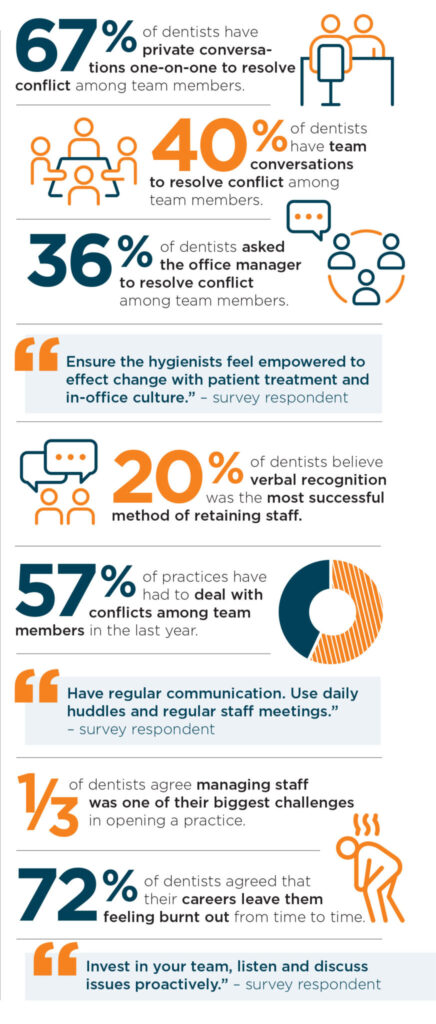
More than half of the Canadian dentists who responded to our survey reported having to resolve conflict between team members at their practice. A dental office is full of people working in close quarters, with potentially very different personalities and opinions. It’s not a question of if conflict will arise at your clinic, but when it will happen. Here are a few things to keep in mind for conflict resolution with your team.
Don’t ignore the problem. While it can feel like the easiest option for handling a conflict, pretending it’s not there will only increase the severity of the issue. Negative feelings will continue to fester, creating a bigger problem. As the leader at your practice, it is your responsibility to create the most comfortable work environment possible for your team.
Listen. The only way to truly understand what the conflict entails is to listen to your team. Having an open dialogue with all individuals involved will allow you to fully grasp the situation and make the necessary changes. Choose a location that feels safe and neutral for all parties and encourages openness and honesty.
Develop a plan and follow through. Once the conflict has been identified and discussed, you must take action. Find a solution that will work for both the success of your business and the satisfaction of team members. Afterward, continue to assess the situation to ensure your plan is working or determine if an alternative solution is needed.

As seen in the print issue of Oral Health November 2024
In October and November 2023 Bramm Research, a third-party independent research house, conducted an online survey of active, practicing non-hospital affiliated dentists and dental specialists on behalf of Oral Health. Survey invitations went out to a contact list of approximately 9,000 readers and there were 265 completions, for a response rate of 2.9 With a total sample of 265, the margin of error is plus or minus 5.9 percentage points at the 95 percent confidence level. If, for example, 50% of the sample indicated that agreed with a statement, then we can be reasonably sure (19 times out of 20) of an accuracy within +/- 5.9%. This means that a total census would reveal an answer of not less than 44.1% and not more than 55.9%.
Sponsored by












